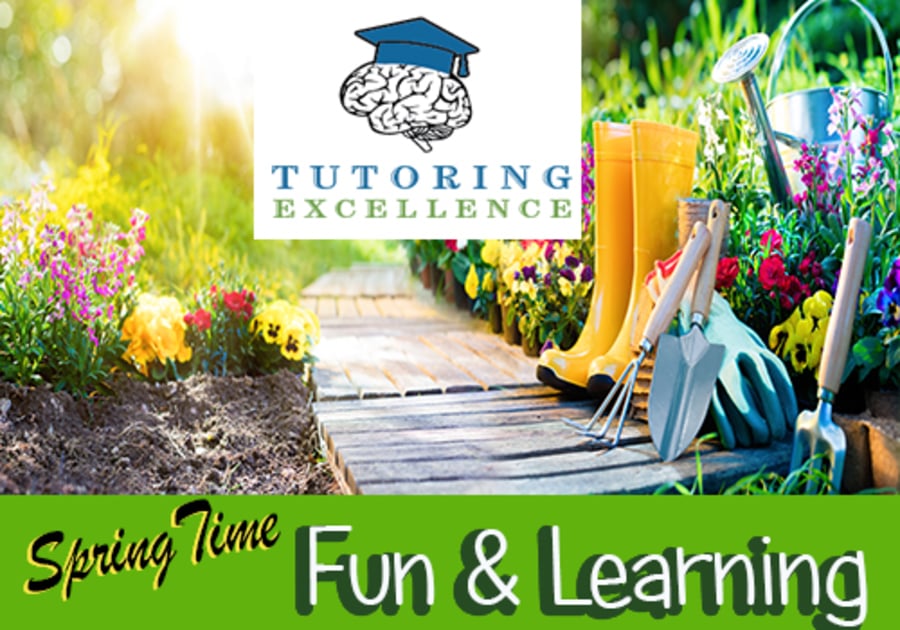Spring is a great time of the year. As Robin Williams stated, “Spring is nature’s way of
saying, ‘Let’s Party!’” Being outside brings new teachable moments. Planting a garden is
a great example of one of these teachable moments. Plant flowers, herbs, vegetables
and one has created an outside classroom for learning across all subject and grade
levels.
Math
What is the surface area of one’s garden? How many seeds can one plant? Start by
measuring with a tape measure the length of the garden and multiply it by its width. The
answer is the surface area of one’s garden. Now, how many seeds can one plant to fill
that surface area? First, look at the directions on the seed packet to find out how much
space each seed will need to grow. Use a ruler to space the seeds, and to make the
holes to the needed depth. At the end count the number of holes one made; one now
knows approximately how many seeds filled one’s garden surface area.
Writing
Journaling the progress of one’s garden can be started by writing regularly about what
events affect its growth: rain, dry spells, and insects. Measure the growth of one’s
plants and include that information. After the summer is over it is fun to look back and
see all the fun one had. Also, one’s journal will help one improve one’s garden next year.
Science
In a garden, there is a lot of science going on. One can learn about the science of plants,
which is called Botany, by studying photosynthesis, chloroplasts, microorganisms, how
plants release oxygen, and the biology of plants. Plants require a wide range of minerals
for healthy growth and reproduction. The main nutrients include N, P, K, Ca, Mg and S.
Also, found in one’s garden are a small amount of Fe, Mn, Cu, Zn, Bo, Cl, Mo, and Ni. The
the chemical property of one’s soil plays a key role in how productive one’s plants will be.
One can pick up a soil testing kit at any plant store, which will help determine what kind
of soil one has. This will help determine what kind of essential nutrients one will need to
add to the soil to help one’s plants grow. As the plants grow one can experiment with
thinning parts of one’s crop and leaving some not thinned to determine which one
yielded the most at harvest.
Art
When one plants a garden one needs ways to remember what vegetable or herbs one
planted and where they are. One can utilize painted sticks or rocks as one’s marker,
write the name of the plant or draw a picture of it to identify the plant’s spot. This
summer when the garden is in full bloom make a scrapbook of photos of all the insects
one can find in the garden. One can draw, paint or sketch the blooming garden.
Planting and cultivating a garden create endless hours of fun. Children develop lifelong
memories while learning the science of a garden. The exciting part is at the end of the
season one gets a giant reward of edible goodness.
Tutoring Excellence Longmont specializes in assisting students Pre-K through College Admissions in math, reading, writing, SAT/ACT Prep, Study Skills, Homework help, all high school classes and more. Come and find out why our students have success in school and life. We pick up from Twin Peaks Academy, Altona Middle School, Eagle Crest Elementary School, Silver Creek High School, Sunset Middle School, Indian Peaks Elementary, and Burlington Elementary. Let us assist your child in their educational goals and be sure to check out our Incredible SUMMER PASS! May 28th - August 17th.



